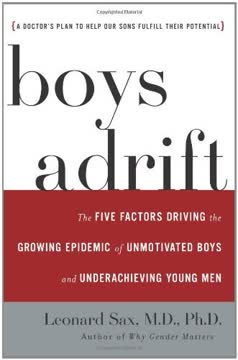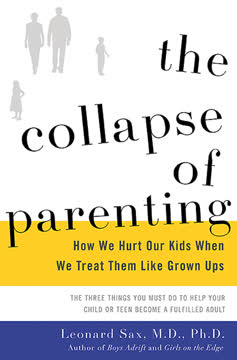Key Takeaways
1. A growing number of boys are unmotivated and adrift.
But here’s what’s really strange, and new, about this picture: That young man isn’t bothered by his situation.
Apathy is increasing. The author, a family physician, observes a disturbing trend: many intelligent, capable boys and young men lack motivation for school, career, or even meaningful relationships. Unlike past generations' rebels who disdained school for other real-world pursuits, these boys often disdain everything, finding little passion outside of passive entertainment. This apathy is widespread across socioeconomic, racial, and geographic lines.
Disengagement is visible. This lack of drive manifests in various ways, including poor school performance despite high IQ, reluctance to pursue higher education, and difficulty holding down stable jobs. The opposite pattern, where girls are unmotivated while boys are driven, is rare in the author's practice. This suggests a specific challenge facing contemporary boys.
The end result. Many of these young men end up living at home with parents, working part-time low-wage jobs, or relying on others financially. What is particularly troubling is their apparent contentment with this state, contrasting sharply with the anxiety and frustration of their parents and partners. This phenomenon represents a significant cultural shift.
2. Modern education is poorly suited to boys' developmental pace and learning styles.
Trying to teach five-year-old boys to learn to read and write may be just as inappropriate as it would be to try to teach three-year-old girls to read and write.
Kindergarten has changed. Today's kindergarten is highly academic, focusing heavily on literacy and numeracy, resembling the first grade of decades past. This accelerated pace clashes with the typical developmental timeline of boys, whose language and fine motor skills often mature later than girls'. This can lead to early frustration and a negative association with school.
Brain differences matter. Research shows that different brain regions develop at different rates in boys and girls. Language areas in five-year-old boys may resemble those of three-and-a-half-year-old girls. Expecting all five-year-olds to perform the same academic tasks ignores these innate differences, potentially labeling boys who aren't developmentally ready as having problems like ADHD.
Learning styles diverge. Education has shifted towards didactic, book-based learning (Wissenschaft) at the expense of experiential, hands-on learning (Kenntnis). Boys, more than girls, often thrive on learning through direct experience and physical activity. This imbalance can make school feel irrelevant and boring, contributing to disengagement, especially when combined with a lack of opportunities for physical movement and competition.
3. Video games offer an addictive, artificial world that displaces real-world drive.
When I’m playing Halo, that world is more real to me than this one.
Powerful engagement. Video games, particularly complex online multiplayer games, provide intense feelings of power, control, and achievement. For boys motivated by a "will to power," these games offer immediate gratification and a sense of mastery in a virtual environment that the real world often fails to provide.
Displacement of real life. The average teenage boy spends significantly more time playing video games than girls, often displacing time previously spent outdoors, on hobbies, or interacting socially in person. This immersion in virtual worlds can make the slower, less immediately rewarding challenges of school and real-world pursuits seem dull and unappealing.
Potential negative effects. Research suggests a negative correlation between time spent gaming and academic performance. Violent video games, in particular, have been linked to increased aggression and a disconnection from the realistic consequences of violence. Some studies even suggest video games may affect brain areas related to motivation, similar to certain medications.
4. Over-prescription of stimulant medications may damage boys' motivation centers.
Children who take these medications may look fine while they’re taking them... But as adults—when they’re no longer taking the medication—they won’t have much drive.
Rising diagnoses. The diagnosis and medication of ADHD have soared, particularly among boys in affluent areas. This increase correlates with changes in educational expectations and a cultural shift towards medicalizing behavioral issues rather than addressing environmental or systemic causes. Teachers often initiate the diagnostic process.
Empirical trials are risky. Doctors often prescribe stimulant medications like Adderall or Ritalin on a trial basis, assuming that if the medication helps, the child must have ADHD. However, these medications can improve focus and performance in children without ADHD as well. This approach risks medicating children unnecessarily.
Impact on motivation. Animal studies suggest that early exposure to stimulant medications can cause permanent damage to the nucleus accumbens, a brain area crucial for motivation. This damage may lead to apathy and a lack of drive later in life, even after the medication is stopped. While not definitively proven in humans, this research raises serious concerns about the long-term effects of widespread stimulant use in developing boys.
5. Environmental chemicals are physically disrupting male development.
When the scientists examined the male sex organs, they didn’t find sperm, they found eggs.
Endocrine disruptors are widespread. Chemicals like phthalates and bisphenol A, found in plastics, pesticides, and other common products, mimic female hormones. These "environmental estrogens" are present in our food, water, and everyday items, leading to significant exposure from conception onwards.
Feminizing effects on males. While these chemicals may accelerate puberty in girls, they appear to disrupt and delay puberty in boys. Studies show links between exposure and genital abnormalities, lower testosterone levels, reduced sperm counts, and increased risk of testicular cancer. This suggests a subtle but pervasive emasculating effect on the male population.
Broader health impacts. Beyond sexual development, environmental estrogens may contribute to rising rates of childhood obesity and potentially ADHD by affecting brain development and hormonal balance. The increasing prevalence of conditions like delayed puberty, overweight, and inattention occurring together in boys points to a common underlying cause, with endocrine disruptors being a prime suspect.
6. The decline of positive male role models leaves boys without guidance.
To be a man, a boy must see a man.
Manhood is taught. Becoming a mature, responsible man is not an automatic biological process; it requires guidance and modeling from older men. Historically, cultures have used rituals, mentorship, and gender-separate communities to teach boys the values and behaviors expected of adult men.
Loss of male community. Modern American culture has seen a decline in traditional male spaces and intergenerational male bonds. Boys' clubs, community organizations, and even informal gatherings where older men mentored younger ones have diminished. This leaves boys looking for role models elsewhere.
Marketplace masculinity. Without positive guidance, boys may turn to media, peers, or online communities for ideas about masculinity. These sources often present distorted or harmful images, emphasizing aggression, disrespect for women, or passive consumption rather than responsibility, service, or integrity. This cultural neglect contributes to the rise of both the "slacker dude" and the violent young man.
7. The "Failure to Launch" phenomenon is a visible consequence.
Why should I be in any hurry to have a career, wife, and children?
A growing trend. More young men are living at home with parents, unemployed or underemployed, and showing little ambition to establish independent adult lives. This is a significant shift from previous generations and is occurring across socioeconomic lines.
Lack of motivation. Unlike past generations where economic necessity or societal expectations drove young men to work and marry, many contemporary young men seem content with a comfortable, dependent lifestyle. They may prioritize leisure, video games, or immediate gratification over long-term goals like career building or starting a family.
Impact on relationships. This lack of drive affects romantic relationships, with many young women expressing frustration and reluctance to partner with men who seem unwilling to take on adult responsibilities. This contributes to declining marriage rates and a changing landscape of American households, where single-parent or single-adult households are becoming more common.
8. Adapting educational environments can re-engage boys.
I’ve come to believe that we should not medicate boys so they fit the school; we should change the school to fit the boy.
Rethink early education. Delaying formal academic instruction until age six or seven, as in Finland, can better align with boys' developmental readiness and prevent early negative school experiences. Restoring play, movement, and hands-on learning (Kenntnis) is crucial for engaging boys.
Embrace boy-friendly methods. Simple changes like making sitting optional, providing adjustable desks, and incorporating more physical activity can significantly improve boys' attention and performance. These methods acknowledge boys' need for movement and varied sensory input.
Consider single-sex options. Single-sex classrooms or schools can create environments where academic achievement is cool, competition is embraced constructively (especially team-based), and teachers can tailor methods to gender-specific learning styles without the social pressures of coed settings. Parents can advocate for these options or form parent groups to drive change.
9. Replacing virtual challenges with real-world activities is crucial.
RaceLegal and programs like it are the best answer to the question, “What do I do after I’ve thrown my son’s PlayStation and Xbox in the garbage?”
Provide real alternatives. Simply restricting video games is insufficient; boys need compelling real-world activities to fill the void. These activities should offer challenges, opportunities for mastery, and a sense of accomplishment that taps into their natural drives.
Embrace physical challenges. Activities like competitive sports (football, rugby), outdoor adventures (hiking, camping, hunting), or even organized racing events (like RaceLegal for cars or motocross) provide physical outlets and test limits in ways video games cannot. These activities teach patience, endurance, and teamwork.
Connect to the real world. Encourage hobbies and activities that involve tangible results and interaction with the physical world, such as building, mechanics, or nature-based pursuits. These experiences provide valuable "knowing how" (Kenntnis) that complements academic learning and builds confidence.
10. Re-evaluating ADHD diagnosis and medication is necessary.
Avoid the use of the stimulant medications: Adderall, Ritalin, Concerta, Metadate, Focalin, Daytrana, and their generic equivalents, amphetamine and methylphenidate.
Insist on thorough assessment. Do not accept an ADHD diagnosis based solely on teacher reports or a brief doctor's visit. Seek evaluation from a qualified professional who considers all five DSM-IV criteria, including onset before age seven and impairment in multiple settings. Rule out other potential causes like learning disabilities, depression, or environmental factors.
Question late diagnoses. Be particularly skeptical of ADHD diagnoses made after age ten, especially if the child was previously successful in school. These cases are often due to other issues like depression, social isolation, or a mismatch with the school environment, not true ADHD.
Explore non-stimulant options. If medication is deemed necessary after a confirmed diagnosis, discuss non-stimulant options like Strattera or Wellbutrin first. These medications may carry fewer risks to the brain's motivation centers than stimulants. Use stimulants only if necessary and at the lowest effective dose.
11. Reducing exposure to endocrine disruptors protects physical development.
Avoid plastic bottles for your own beverages and for your children’s beverages. Use glass instead.
Minimize plastic contact. Reduce exposure to chemicals like bisphenol A and phthalates by avoiding clear plastic bottles for beverages, especially when heated. Opt for glass or stainless steel containers instead. Avoid microwaving food in plastic.
Choose safer products. Look for "PVC-free" toys and pacifiers. Inquire about phthalate-free dental sealants. While complete avoidance is difficult, reducing exposure, particularly during critical developmental periods (in utero and early childhood), is important.
Advocate for change. Support companies developing safer alternatives like corn-based PLA plastics. Educate others about the risks of endocrine disruptors and encourage collective action to pressure industries to adopt safer materials and practices. Stay informed about new research and recommendations.
12. Restoring intergenerational bonds provides essential male guidance.
If a boy does not have a community of men, then he is likely to look elsewhere for his role models.
Provide male role models. Boys need consistent interaction with positive adult men who can model healthy masculinity, responsibility, and service. This is crucial even if the boy has a present father, as a community of men offers diverse perspectives and support.
Seek male-led communities. Look for opportunities for your son to connect with men through organized groups like Boy Scouts, faith-based youth groups, sports teams coached by trusted men, or outdoor/hobby clubs (hunting, fishing, skeet shooting, mechanics). These provide structured environments for mentorship.
Foster intergenerational connection. Encourage your son to spend time with grandfathers, uncles, or other older male relatives. These relationships pass down values, skills, and a sense of heritage that can ground a boy and provide a counterpoint to peer or media influences. Actively create opportunities for these bonds to form and strengthen.
Last updated:
FAQ
1. What is Boys Adrift by Leonard Sax about?
- Focus on unmotivated boys: The book investigates the rising epidemic of unmotivated boys and underachieving young men in modern society.
- Five key factors: Dr. Sax identifies five main contributors: changes in education, video games, ADHD medications, endocrine disruptors, and the loss of positive male role models.
- Broader implications: The book explores how these factors impact boys’ development, motivation, relationships, and future success, offering insights for parents, educators, and policymakers.
2. Why should I read Boys Adrift by Leonard Sax?
- Comprehensive research and analysis: The book combines scientific studies, clinical experience, and cultural commentary to provide a thorough understanding of boys’ challenges today.
- Practical strategies: Dr. Sax offers actionable advice for parents and educators to help boys re-engage with school and life.
- Unique focus: While acknowledging girls’ issues, the book fills a gap by focusing on the specific and often overlooked problems facing boys in contemporary society.
3. What are the key takeaways from Boys Adrift by Leonard Sax?
- Five-factor framework: The book’s central thesis is that five modern factors are derailing boys’ motivation and achievement.
- Need for tailored solutions: Boys require educational, social, and developmental approaches that recognize their unique needs and developmental timelines.
- Call for cultural change: Sax urges a reevaluation of how society, schools, and families support boys, emphasizing the restoration of positive male role models and healthier environments.
4. How does Leonard Sax define adulthood and success for young men in Boys Adrift?
- Independence as adulthood: Sax defines adulthood as being independent from one’s parents, regardless of age or financial status.
- Value of responsibility: He criticizes the trend of young men prioritizing comfort over independence, seeing this as a root of the “Failure to Launch” phenomenon.
- Cultural expectations: The book highlights how shifting societal values have weakened the drive for economic and spiritual independence among young men.
5. What are the five factors driving boys’ disengagement according to Boys Adrift by Leonard Sax?
- Changes in education: Early academic acceleration, feminized school environments, and loss of competition alienate many boys.
- Video games: Immersive and often violent games provide artificial achievement and can sap motivation for real-world goals.
- ADHD medications: Overdiagnosis and overuse of stimulants may harm boys’ long-term motivation and brain development.
- Endocrine disruptors: Environmental chemicals mimic female hormones, disrupting boys’ physical and neurological development.
- Loss of positive male role models: Fewer male mentors and weakened intergenerational bonds leave boys without guidance or a sense of duty.
6. How have changes in education contributed to boys’ lack of motivation, according to Boys Adrift?
- Developmental mismatch: Accelerated curricula in early grades often do not align with boys’ developmental readiness, especially in reading and writing.
- Loss of experiential learning: Schools have shifted from hands-on, multisensory learning to didactic, book-based instruction, which can disengage boys.
- Elimination of competition: The removal of competitive sports and team challenges reduces motivation for boys who thrive on clear outcomes and rivalry.
- Gendered motivation: Boys are less likely to be motivated by pleasing teachers and more likely to disengage if schoolwork feels irrelevant.
7. What role do video games play in boys’ disengagement, as explained in Boys Adrift by Leonard Sax?
- Artificial achievement: Video games offer boys a sense of power, control, and accomplishment that may be missing in real life or school.
- Negative academic impact: Research shows a consistent negative correlation between time spent gaming and academic performance.
- Brain effects: Gaming stimulates the brain’s reward center but can reduce motivation for real-world goals by affecting the prefrontal cortex.
- Social isolation: Excessive gaming can displace real-life relationships and family interaction, leading to preference for virtual worlds.
8. What concerns does Leonard Sax raise about ADHD diagnosis and medication in Boys Adrift?
- Overdiagnosis and overprescription: Many boys are diagnosed with ADHD and prescribed stimulants without thorough assessment, often to fit them into unsuitable school environments.
- Potential long-term harm: Animal studies suggest stimulants may damage brain areas responsible for motivation, leading to reduced drive in adulthood.
- Medication effects: Some boys become less enthusiastic or more irritable on medication, raising questions about the true benefits versus risks.
- Alternative approaches: Sax advocates for adapting schools to boys’ needs and considering non-stimulant medications or other interventions when necessary.
9. How do endocrine disruptors affect boys, according to Boys Adrift by Leonard Sax?
- Environmental hormone mimics: Chemicals like phthalates and bisphenol A in plastics act as environmental estrogens, disrupting male hormone systems.
- Physical and neurological effects: These disruptors are linked to delayed puberty, lower testosterone, increased obesity, and reduced motivation in boys.
- Behavioral feminization: Exposure can reduce typical male behaviors, leading to boys who are neither fully masculine nor feminine.
- Reproductive health risks: There are increased rates of genital abnormalities, lower sperm counts, and testicular cancer associated with these chemicals.
10. Why does Leonard Sax emphasize the importance of positive male role models in Boys Adrift?
- Manhood through mimesis: Boys learn mature masculinity by observing and interacting with adult men, not just their fathers but a community of men.
- Cultural neglect: The decline of boys’ clubs and intergenerational bonds leaves boys without guidance, leading to slacker lifestyles or antisocial behaviors.
- Risk of negative influences: Without healthy role models, boys may turn to unhealthy alternatives, such as gangs or media stereotypes.
- Restoring mentorship: Sax advocates for male-led activities and mentorship programs to rebuild essential networks for boys’ development.
11. What solutions and strategies does Leonard Sax propose in Boys Adrift to help boys regain motivation?
- Educational reform: Delay formal academics for boys, incorporate experiential learning, and reintroduce healthy competition and team activities.
- Limit video game use: Parents should restrict violent games, limit playtime, and encourage real-world activities that satisfy boys’ need for mastery.
- Cautious medication use: Insist on thorough ADHD assessments, prefer non-stimulant medications, and adapt classrooms to boys’ needs.
- Reduce endocrine disruptor exposure: Avoid plastics with phthalates or bisphenol A, especially for infants and pregnant women.
- Restore male mentorship: Encourage father involvement, mentorship programs, and cultural recognition of male developmental needs.
12. What are the best quotes from Boys Adrift by Leonard Sax and what do they mean?
- “You can try to drive out Nature with a pitchfork; yet she will always return.” This quote illustrates that boys’ natural tendencies cannot be suppressed without consequences; forcing boys into unsuitable molds leads to disengagement.
- “Girls read; boys don’t.” Highlights the widening gender gap in reading for pleasure, which affects boys’ academic success and motivation.
- “The gift of a year is the best gift you can give a child.” Refers to holding boys back a year before starting school to better match their developmental readiness.
- “The will to power.” Nietzsche’s concept used to explain boys’ deep need for control and mastery, which video games satisfy but school often fails to address.
- “To be a man, a boy must see a man.” Emphasizes the importance of positive male role models and mentorship in boys’ development.
Review Summary
Boys Adrift explores five factors contributing to unmotivated and underachieving young men: changes in education, video games, ADHD medications, endocrine disruptors, and lack of male role models. Reviewers found the book thought-provoking and valuable for parents, though some criticized its alarmist tone and reliance on anecdotes. Many appreciated Sax's insights on boys' developmental needs and the challenges they face in modern society. Critics noted the book's conservative bent and questioned some of its proposed solutions. Overall, readers found it a compelling, if controversial, examination of issues affecting boys' development and motivation.
Similar Books

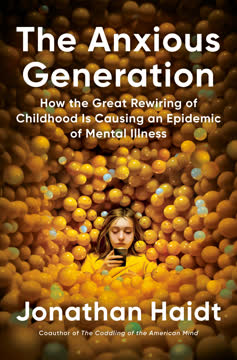


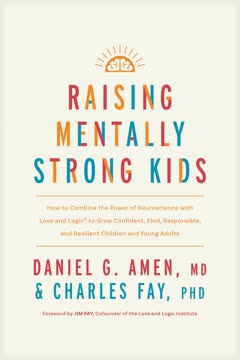
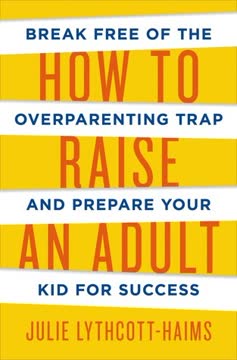
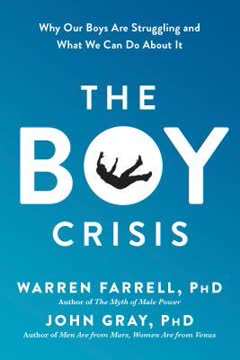



Download PDF
Download EPUB
.epub digital book format is ideal for reading ebooks on phones, tablets, and e-readers.
